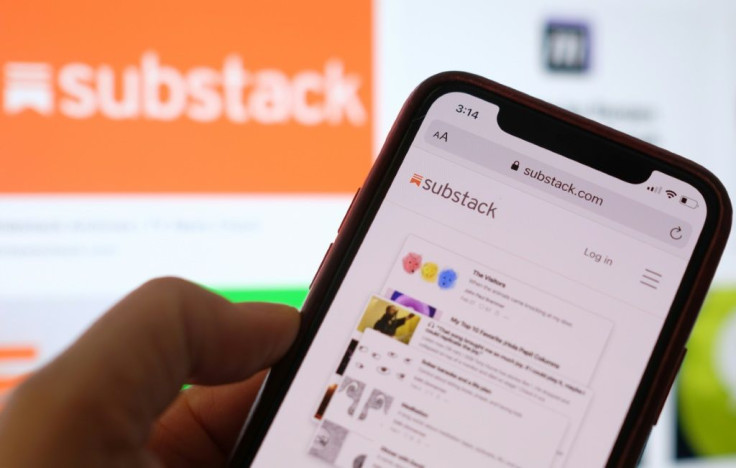Journalists Create Their Brands In Growing 'Direct' Sales Model
Anna Codrea-Rado built a name for herself as a freelance journalist, building an audience of 2,500 for her email newsletter, "Lance," aimed at helping other independent writers.
Then in 2019 she joined a wave of writers charging a subscription fee for her weekly newsletter using the Substack platform, moving to the direct-to-consumer model.
"At the time, I thought it was crazy to charge people for emails," said the British writer who also produces her own podcasts.
But being a freelance writer, this has become "a game changer in terms of actually getting paid on time, and like your cash flow," she said.
The number of her subscribers quickly dropped to 130 but then bounced back progressively to over 300.
"It was a good revenue stream," even though she suspended the pay model during the coronavirus pandemic.
Codrea-Rado's experience highlights a growing movement in the news media, where legacy organizations are facing growing economic woes, of writers creating their own brands to connect with readers, bypassing traditional outlets.

Independent writers may have their own online web page, newsletter, podcast, or even connect by text message via the Subtext platform.
Jeremy Caplan, director of teaching, learning and assessment at City University of New York's Newmark Graduate School of Journalism, said journalists are cashing in on consumers' growing willingness to pay for subscriptions, ranging from services like Netflix to Spotify to meal kits.
"People have just become more accustomed to the idea of small-scale microsubscriptions," Caplan said.
"And they're subscribing to multiple video services and maybe multiple audio or other services from music to fitness."
Substack has some 500,000 subscribers who pay an average of $5 to $10 per month for popular newsletters.
The 10 most popular newsletters generated some $15 million in revenue last year, according to the platform.

A few well-known journalists have capitalized on their reputation. For example, Pulitzer Prize winner Glenn Greenwald, who resigned from The Intercept last year in a spat with management, reportedly takes in more than $80,000 monthly from his Substack newsletter.
Some say the trend is driven by the deepening crisis in the media sector which has made life difficult for many salaried journalists.
"The lack of decent pay, and the lack of benefits proposed by companies is causing more and more people to try to remove themselves from those companies and get deals with Substack, or another group," said Jon Schleuss, president of the NewsGuild. which represents journalists at dozens of news organizations.
The market is growing more competitive with new entrants such as Ghost, which offers low-priced newsletters, TinyLetter, ButtonDown and Patreon, a long-running platform for creators and performers.
Social media is a key to getting readers, and the large platforms are also getting in on the action.
In January, Twitter bought the writers platform Revue, and Facebook in March unveiled plans for its own platform
David Sirota, founder of The Daily Poster, another platform for writers, said the newsletter model "allows us to build a truly independent, non-corporate media outlet that can challenge power and get input and feedback from our supporters."
But there are challenges, Sirota said.
"The toughest part of this model is that it takes time for us to expand our work and our audience, and there is no shortcut to developing a meaningful relationship with a larger and larger audience," he said.
"Journalism is time- and labor intensive... I don't particularly like asking people to pitch in, but it's the only way to launch a truly independent media outlet."
Isaac Saul, creator of the political newsletter Tangle, which has some 3,000 paying subscribers, said the model has advantages.
"For me, the best part is that I'm not associated with any other brands or institutions, so my readers can make a judgment about my work based solely on my writing," Saul said.
"In the political space, this is a huge advantage, and helps me avoid readers who may otherwise pre-bias my work."
Tangle "is about exposing people to a wide range of political views," he said.
"The crux of what I do is summarize the right, left and center's positions on a political story, and then share my own view. So I am definitely trying to escape the traditional perceptions of bias in the media."
© Copyright AFP {{Year}}. All rights reserved.





















